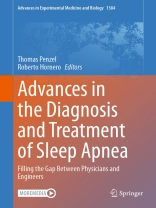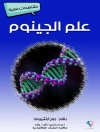The book focuses on biomedical innovations related to the diagnosis and treatment of sleep apnea. The latest diagnostic tools are described, including sleep laboratory equipment, wearables, and even smartphone apps. Innovative medical devices for treatment are also covered, such as CPAP, Auto-PAP, hypoglossal nerve stimulation, phrenic nerve stimulation, acoustic brain stimulation and electrical brain stimulation. This is an ideal book for biomedical engineers, pneumologists, neurologists, cardiologists, physiologists, ENT physicians, pediatrics, and epidemiologists who are interested in learning about the latest technologies in treating and diagnosing sleep apnea.
Chapter 12 is available open access under a Creative Commons Attribution 4.0 International License via link.springer.com.
Tabela de Conteúdo
Section A Physiology.- An Overview On Sleep Medicine.- Covering The Gap Between Sleep And Cognition – Mechanisms and Clinical Examples.- Obstructive sleep apnoea: Focus on Pathophysiology.- Diagnosis of obstructive sleep apnea in patients with associated comorbidity.- Pediatric Obstructive Sleep Apnea: What’s in a Name?.- Treatment of Cheyne-Stokes respiration in heart failure with adaptive servo-ventilation: An integrative model.- Section B Diagnostic innovations.- Automated scoring of sleep and associated events.- Conventional machine-learning methods applied to the automatic diagnosis of sleep apnea.- Home Sleep Testing of Sleep Apnea.- ECG and heart rate variability in sleep-related breathing disorders.- Cardiopulmonary Coupling.- Pulse oximetry: the working principle, signal formation, and applications.- Oximetry indices in the management of sleep apnea: from overnight minimum saturation to the novel hypoxemia measures.- Airflow Analysis In The Context OF Sleep Apnea.- Deep-learning Model Based on Convolutional Neural Networks to Classify Apnea-hypopnea Events From The Oximetry Signal.- Tracheal sound analysis.- Obstructive Sleep Apnea with COVID-19.- Section C Therapeutic innovations.- APAP, BPAP, CPAP and new modes of positive airway pressure therapy.- Adherence monitoring using telemonitoring techniques.- Innovations in The Treatment of Pediatric Obstructive Sleep Apnea.- Hypoglossal Nerve Stimulation Therapy.- Anna M. Mohammadieh.- Index.
Sobre o autor
Thomas Penzel is a Professor and Doctor at the Sleep Medicine Center at Charite Universitätsmedizin in Berlin, Germany. His work is devoted to the diagnosis and treatment of sleep disordered breathing.
Roberto Hornero is a Professor in the Department of Signal Processing and Communications at the University of Valladolid, in Valladolid, Spain, and Director of the Biomedical Engineering Group at the University of Valladolid. He is a member of the Biomedical Research Networking Center in Bioengineering, Biomaterials and Nanomedicine (CIBER-BBN, Ministry of Health, Spain). His work is devoted to analyzing pulse oximetry and overnight polysomnography signals to help in the diagnosis of obstructive sleep apnea.












